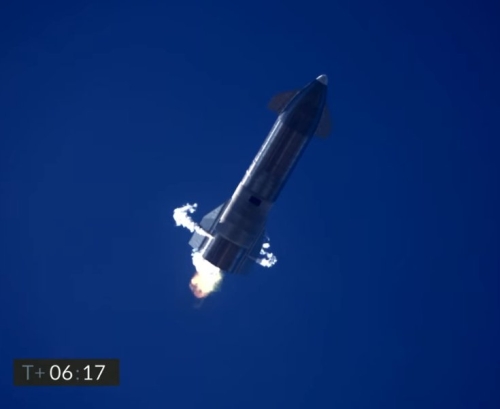Starship update: Prototype #10 being readied for launch
Link here. Not only have the engines been installed on the tenth Starship prototype, the static fire test is set for this week, maybe as early as today. It appears they are trying to launch the next test flight before the end of February.
At landing they will now fire all three engines, in case one or more fail to light (as happened with prototype #9), and then shut down all but one immediately and let that do the landing burn. This adds redundancy and increases the odds of a successful landing.
The article also provides a detailed update on the status of future Starship and Super Heavy test articles. While #11 is being readied for launch, it appears that, based on what has been learned from #8 and #9, they are dismantling prototypes #12-14 and incorporating changes to #15, which will likely fly after #11.
One aspect of this development program struck me today. These prototypes are essentially expendable rockets. Like it did with its early expendable Falcon 9, SpaceX is using these throw-away prototypes to test ways to make them more reusable and reliable. Unlike the Falcon 9s, however, the company isn’t using these prototypes to launch payloads, at least not at this stage. It isn’t good enough that these prototypes can successfully launch. They must be able to land as well.
I suspect that once during this test program the full rocket begins to reach orbit SpaceX will add payloads, even as they continue to test re-entry and landing. The early flights might produce rockets that successfully bring satellites into space but end up getting destroyed upon return. Those loses will then be used to make later ships better and more likely to return intact.
Eventually, we will have a rocket entirely reusable and flying multiple times, just like the Falcon 9 first stage.
Link here. Not only have the engines been installed on the tenth Starship prototype, the static fire test is set for this week, maybe as early as today. It appears they are trying to launch the next test flight before the end of February.
At landing they will now fire all three engines, in case one or more fail to light (as happened with prototype #9), and then shut down all but one immediately and let that do the landing burn. This adds redundancy and increases the odds of a successful landing.
The article also provides a detailed update on the status of future Starship and Super Heavy test articles. While #11 is being readied for launch, it appears that, based on what has been learned from #8 and #9, they are dismantling prototypes #12-14 and incorporating changes to #15, which will likely fly after #11.
One aspect of this development program struck me today. These prototypes are essentially expendable rockets. Like it did with its early expendable Falcon 9, SpaceX is using these throw-away prototypes to test ways to make them more reusable and reliable. Unlike the Falcon 9s, however, the company isn’t using these prototypes to launch payloads, at least not at this stage. It isn’t good enough that these prototypes can successfully launch. They must be able to land as well.
I suspect that once during this test program the full rocket begins to reach orbit SpaceX will add payloads, even as they continue to test re-entry and landing. The early flights might produce rockets that successfully bring satellites into space but end up getting destroyed upon return. Those loses will then be used to make later ships better and more likely to return intact.
Eventually, we will have a rocket entirely reusable and flying multiple times, just like the Falcon 9 first stage.








